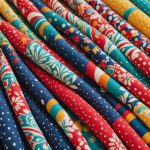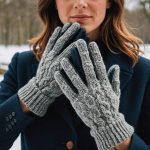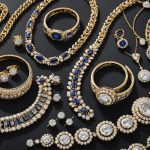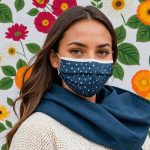Fabric Selection Guide for DIY Face Masks
Choosing the right fabric is crucial for both the comfort and effectiveness of DIY face masks. A well-selected fabric ensures that the mask is not only stylish but also functional. Here’s what you need to know:
Begin by focusing on the fabric materials. Cotton is widely recommended as it balances breathability and filtration. Lightweight fabrics, such as linen, provide comfort, especially in warmer climates. However, these materials may require additional layers for better protection.
Also to read : Discovering the Perfect Ankle Boots for Wider Feet: An Ultimate Resource Guide
Stylish fabric choices can elevate your mask and make routine wearing a pleasurable experience. Prints like florals add a touch of personality, while solid colors offer a sleek, professional look. Consider your wardrobe and lifestyle when selecting these patterns.
Key factors to consider include the fabric’s density, weave, and washability. Dense weaves offer better protection, but might sacrifice breathability, so balance is essential. Ensure your chosen fabric is durable enough to endure regular laundering, maintaining hygiene standards.
Also to see : Revitalize Your Beauty Regimen: Top Aloe Vera Tips for Glowing Skin and Hair
Mix and match fabrics to create personalized masks that reflect your style. Always prioritize comfort and fit, as poorly fitted masks can compromise safety and cause discomfort. With a sound understanding of fabric properties, you’ll succeed in crafting DIY masks that serve both practical and aesthetic purposes.
Breathability and Comfort in Fabric Selection
When considering breathable fabrics for DIY face masks, it’s vital to focus on materials that facilitate air circulation while ensuring protective quality. Cotton and linen, as noted, are excellent starting points. They’re comfortable and breathable, suitable for extended wear. However, you may want to investigate even more options. For improved air flow, look for tightly woven cotton blends or fabrics with a loose weave pattern. Remember, breathability directly impacts comfort, especially during active use or in warm conditions.
Comfortable mask materials often make a significant difference in how long you can comfortably wear a mask. A snug fit is crucial, but it should never be at the cost of comfort. Evaluate the fabric’s texture and elasticity to prevent skin irritation or pressure marks.
One way to ensure your fabric choice meets comfort needs is through breathability tests. Hold the material up to a light source; if minimal light passes through, it might restrict airflow. Alternatively, try blowing through a sample: adequate air passage without significant resistance indicates a breathable fabric. Combining these considerations with practical testing can guide you to select the best fabric for an all-day wearable mask, merging protection with style conveniently.
Patterns and Colors for Stylish Face Masks
Selecting the right mask patterns and color combinations can significantly alter the aesthetic appeal of your DIY face mask. Popular patterns that enhance personal style include florals, geometric designs, and playful prints. These patterns not only set the mood but also allow you to express individuality. Consider using seasonal color trends to keep your face mask fashionable throughout the year. For instance, pastels might be ideal for spring, whereas rich, earthy tones could suit autumn wear.
When it comes to mixing and matching colours, balance is key. A vibrant pattern paired with a subtle, complementary hue can create a cohesive look without overwhelming the senses. Moreover, maintaining a versatile colour palette ensures that the mask harmonizes with a broader range of outfits.
Finally, beyond aesthetics, your mask should still be functional. Opt for fabrics that maintain integrity over multiple washes. This dual focus on fabric aesthetics and durability ensures the mask serves as both a style statement and a protective measure. Exploring these options in your DIY projects can lead to innovative and unique face masks that marry practicality with personal expression.
Combining Aesthetics with Functionality
When crafting a functional mask design, achieving the right balance between style and protection is key. A mask’s aesthetic should never hinder its effectiveness. Designers must incorporate aesthetic considerations with practical features like adjustable ear loops and nose wires.
Integrating functional elements into mask design requires an amalgam of stylish yet practical masks. Fabrics should not only be visually appealing but also adhere to protective standards. For instance, adding a filter pocket can enhance a mask’s functionality without sacrificing style. It’s essential to select stylish fabric choices that maintain structure after several washes, ensuring ongoing protection.
Some examples of stylish masks that do not compromise on safety include those with coordinated color palettes that align with current fashion trends, while featuring multiple layers for added safety. Selecting patterns that highlight individualism yet blend seamlessly with daily attire is another strategy. Consider masks with distinct aesthetic textures that also boost utility, like water-resistant exteriors combined with soft inner linings.
Achieving an effective blend of style and utility requires careful material selection and functional design features that enhance both appearance and mask efficiency. By focusing on these aspects, you can create masks that serve both protective needs and aesthetic desires.
Inspirational DIY Mask Projects
Finding inspiration for creating DIY masks can transform a simple crafting project into a display of personal expression. Engaging with DIY mask tutorials is a great way to start. These guides offer step-by-step instructions that accommodate various skill levels. Whether you’re a seasoned seamstress or a beginner, there’s a tutorial out there for you. Tutorials often explore an array of techniques, which can include pleating, adding nose wires, or incorporating adjustable straps for improved comfort and fit.
Creative mask projects demonstrate the limitless potential of mask design. Think beyond the conventional styles by experimenting with embellishments like embroidery or fabric paint, adding a unique twist to your masks. For those with a penchant for pattern-making, crafting multi-layered masks with interchangeable layers offers both versatility and functionality.
Incorporating advanced sewing techniques contributes to an enhanced fit and style. Techniques such as French seams not only provide a neat finish but also add strength to the mask, allowing repeated use. Additionally, integrating darts or pleats can ensure a snug, more contoured fit that adapts better to the unique curves of your face. Embrace the array of creative possibilities to craft masks that stand out while remaining highly functional.
Where to Find Quality Fabrics
When embarking on a DIY face mask project, sourcing from reputable fabric sources is paramount. The quality of your materials significantly impacts both the mask’s functionality and aesthetic appeal.
Recommended Online and Local Fabric Stores
Consider browsing online fabric stores for a wide selection of stylish and practical options. Websites often stock an array of textiles perfect for DIY projects, such as cotton blends or prints suitable for masks. Local shops can also offer unique finds, where personal assistance can guide you on fabric choices.
Evaluating Fabric Suppliers
Selecting the right stylish fabric suppliers involves evaluating their offerings based on quality and diversity. Prioritise stores that provide detailed fabric descriptions and samples, ensuring you make informed decisions about suitability for masks. Sustainability is also a crucial factor: opt for suppliers known for eco-friendly practices or materials, thus aligning with growing environmental concerns.
Importance of Sourcing Quality Materials
The overall effectiveness and longevity of your DIY mask depend on sourcing high-quality materials. Robust fabrics maintain their structure and appearance after multiple washes. A well-informed choice in fabric not only enhances your mask’s functionality but also ensures comfort and style, ultimately aligning with both your personal taste and practical needs.











